The diagram given below is a representation of a phenomenon pertaining to the nervous system. Study the diagram and answer the following questions:

(i) Name the phenomenon that is being depicted.
(ii) Give the technical term for the point of contact between the two nerve cells.
(iii) Name the parts A, B, C and D.
(iv) Write the functions of parts E and F.
(v) How does the arrangement of neurons in the spinal cord differ from that of the brain.
(i) Reflex action/Reflex arc/ Nervous pathway of Reflex action.
(ii) Synapse
(iii) Different parts are labelled as :
A - Sensory / Afferent fibre / Axon of sensory neuron
B - Dorsal root ganglion/ aggregates of cell bodies of sensory neuron.
C-White matter
D-Grey matter
(iv) E - Carry impulses from (operative) sensory neuron to motor neuron.
F - Carry impulses from
(operative) central nervous system/brain and spinal cord/to effector /muscle/ gland.
(v) In spinal cord - cytons are in the inner grey matter and axons in the outer white matter. In brain - cytons are in the outer grey matter and axons in the inner grey matter.
Topper's Solved these Questions
Similar Questions
The diagram given belwo represents a system in the human body. Study the diagram and answer the following question:
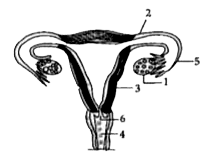
Name the two hormones secreted by 1.View SolutionGiven below is a diagram representing a stage during the mitotic cell division। Study the diagram and answer the following questions :
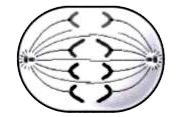
Name the four nitrogenous bases.View SolutionStudy the diagram and answer the questions that follow :
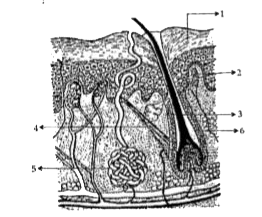
Name the pigment that gives colour to the skin.View SolutionStudy the diagram and answer the questions that follow :
Explain the function of part 3.View SolutionThe diagram given below shows the internal structure of a spinal cord depicting a phenomenon. Study the diagram and answer the questions:
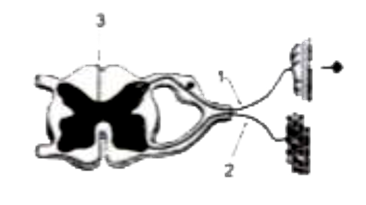
Name the parts numbered 1, 2 and 3.View SolutionGiven below is a diagram depicting a physiological process in plants. Study the same and answer the following questions :
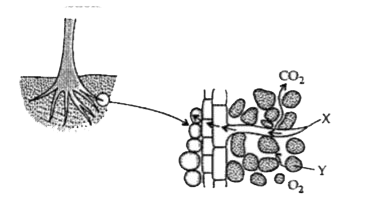
Define the part X.View SolutionStudy the diagram and answer the questions that follow:
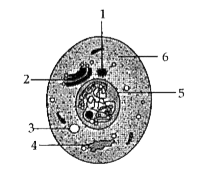
Give the function of parts .5. and .6..View SolutionName the parts A, B , C , D and E in the given diagram .
 View Solution
View SolutionStudy the diagram and answer the questions that follow :

Explain the function of parts 5 and 6.View SolutionStudy the diagram and answer the questions that follow :
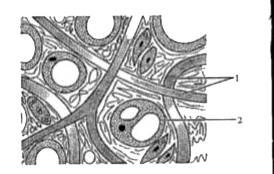
Name the rounded cells filled with fat.View Solution

